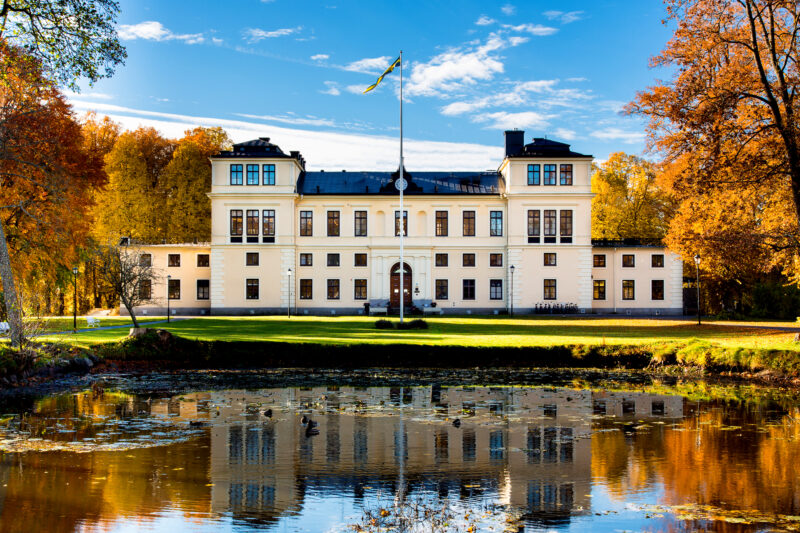
Rånäs Castle Photo: Anders Fredriksen
The organisers welcome you to the Wallenberg Advanced Scientific Forum on the theme Foundations of NeuroSymbolic Artificial Intelligence.
Neurosymbolic AI is widely regarded as the “third wave” of artificial intelligence, combining the strengths of neural networks with techniques from knowledge representation and reasoning. These techniques draw from various fields, including logic, databases, and knowledge graphs. Neurosymbolic AI supports learning, reasoning, and perception, exploiting both data and knowledge. Data and knowledge are complementary, as one can compensate for the other when constructing AI models. The integration of symbolic methods not only enables explainable and trustworthy AI, but also provides strong guarantees regarding safety and robustness in AI systems.
Neurosymbolic AI addresses the long-standing open question of how to integrate subsymbolic and symbolic models, and provides an operational perspective w.r.t Kahnemann’s System 1 vs System 2 view in cognitive science. Neurosymbolic AI is high on the research agenda, it is mentioned as an innovation trigger on the Gartner hype cycle, it is the topic of AI debates, and yields intriguing results such as DeepMind’s AlphaGeometry that can solve Olympiad-level geometry problems.
This workshop will be held in a FANeSy-spirit. A first, very successful, FANeSy workshop was organized in Santiago, Chile in March 2024 (See more for list of participants and more information).
The Wallenberg Advanced Scientific Forum is by invitation only.
Date and time
The workshop starts in the morning on March 17 and ends with lunch on March 20, all at Rånäs Castle, Stockholm.
Topics
As neurosymbolic AI is interdisciplinary and involves many different subfields of AI, there are many different perspectives on the topic. The FANeSy view is unique in that it 1) focusses on foundational issues, and 2) aims at bringing together a select group of experts to foster collaboration and establish connections between different areas relevant to neurosymbolic AI.
FANeSy is centred around the foundations of the field, as these are not well-understood today. FANeSy will identify open problems and discuss key mathematical and algorithmic challenges. At the same time, FANeSy wants to bring together key representatives from relevant areas focusing on (a) neurosymbolic logics and systems, (b) knowledge graphs and graph neural networks, and (c) reinforcement learning and planning. The first has a stronger tradition in machine learning and knowledge representation, the second in databases and the semantic web, and the third – planning and reinforcement learning – requires strong reasoning and perception abilities.
Unlike other events that have been organised on neurosymbolic AI, FANeSy focuses on mathematical and theoretical foundations, which are studied across these different fields. There are, for instance, strong links between database theory, graph neural networks, knowledge graphs and logic, and between formal logic, verification and safety in planning and reinforcement learning. By exploiting these, we will develop the foundations for neurosymbolic learning and reasoning.
Key Questions
The following is a non-exclusive list of questions to be addressed in the Wallenberg Scientific Forum.
• What are the foundations of neurosymbolic AI?
• What are the mathematical and computational properties of neurosymbolic AI?
• How can one use neurosymbolic AI to make AI more trustworthy? For instance, w.r.t. robustness and safety, but also from an ethical perspective.
• What role can graph neural networks play as a bridge between the symbolic and the subsymbolic worlds of databases and neural networks?
• How can one use large-scale databases and knowledge graphs in neurosymbolic AI?
• How can planning approaches be extended towards perception using neurosymbolic AI?
• How can one use neurosymbolic AI as a basis for learning and reasoning?
• What are crisp neurosymbolic AI settings of interest? and what are their learnability properties?
• What neurosymbolic AI representations are of interest? and what are their expressiveness properties? What types of symbolic queries and models can (graph) neural networks answer?
• What is the relation of neurosymbolic AI to generative AI? And what role can it plan in AI itself ?
• Can we identify a methodology to develop successful applications of neurosymbolic AI?
Workshop structure
There will be 1) introductory sessions and tutorials for each of the three different areas: A1) neurosymbolic logics and systems, A2) knowledge graphs and graph neural networks, and A3) reinforcement learning and planning. These will be followed by discussion sessions that are focussed on their intersection. We also will explicitly solicit position statements, challenge problems and talks amongst all participants.
Detailed schedule
(Preliminary)
Morning: Arrivals
Lunch 12.00-13.00
Afternoon:
- All participants introduce themselves
- The workshop organisers set the scene, introduce the topics and approach
- Tutorial A1 + A few talks
- (Commentators from A2 and A3)
Dinner 18.00-
Morning:
- Tutorial A2 + A few talks
- (Commentators from A1 and A3)
- Determining discussion topics for breakout sessions
Lunch 12.00-13.00
Afternoon:
- Tutorial A3 + A few talks
- (Commentators from A2 and A1)
- 1st Breakout sessions around the discussion topics
Dinner 18.00-
Morning:
- Challenge problems and their solutions in neurosymbolic AI
- A few talks and position statements
Lunch 12.00-13.00
Afternoon:
- Applying neurosymbolic AI
- A few talks and position statements
- 2nd Breakout session around the discussion topics
Dinner 18.00-
Morning:
- Neurosymbolic AI as a potential solution to Trustworthy AI — ethical aspects
- Presentation + discussion
- Summary session
Lunch 12.00-13.00
Program committee
Luc De Raedt, Wallenberg Guest Professor in Computer Science and Artificial Intelligence, Örebro University, and Professor of Computer Science, KU Leuven
Pablo Barcelo, Director Institute for Mathematical and Computational Engineering, Universidad Católica de Chile
Hector Geffner, Professor and Chair of Machine Learning and Reasoning, RWTH Aachen University

Rånäs dining room. Photo: Anders Fredriksen
Accomodation
A single room is booked for each participant. Guaranteed check-in time is 15:00 at the day of your arrival and check-out is 9:00 on the day of your departure.
Transportation
WASP offers transfer by bus on Tuesday and on Friday between Arlanda Airport and Rånäs Castle. You will receive more information further on.


